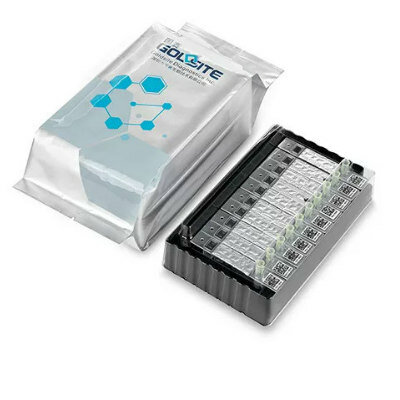Autosomal Dominant Disorder Confirmed by Biomarker Assay
By LabMedica International staff writers
Posted on 06 Feb 2012
The erythrocyte glucose-uptake assay has been used to confirm the diagnosis of glucose transporter type 1 deficiency syndrome (Glut1-DS). Posted on 06 Feb 2012
The disease is diagnosed with cerebrospinal fluid (CSF) glucose values of less than 2.2 mmol/L, or lowered CSF/plasma glucose ratio of less than 0.4, and the erythrocyte 3-O-methyl-d-glucose uptake assay (3-OMG).
Scientists at Columbia University (New York, NY, USA) studied 109 suspected cases of Glut-1 DS, all who had a consistent clinical picture and a low CSF glucose concentration (hypoglycorrhachia). To confirm the diagnosis of Glut1 DS, blood samples from both patients and parents were analyzed using the erythrocyte 3-OMG uptake assay. The erythrocytes are radioactively labeled and measured on a scintillation counter.
Copy number analysis was performed via single nucleotide polymorphism (SNP) oligonucleotide microarray analysis (SOMA) using the Affymetrix Genome Wide Human SNP Array 6.0 (Santa Clara, CA, USA), which includes over 906,600 SNPs and more than 946,000 probes for the detection of copy number variation. A multiplex ligation-dependent probe amplification (MLPA) kit (MRC-Holland; Amsterdam, Netherlands) was used to screen eight patients with decreased 3-OMG uptake without identified sequence based mutations or deletions using SOMA. .
The uptake assay was decreased in 74 cases (group 1) and normal in 35 cases (group 2). The disease-causing mutations were identified in 70 group 1 patients (95%) and only one in group 2 patients (3%). The cut-off for an abnormally low uptake value was increased from 60% to 74% with a corresponding sensitivity of 99% and specificity of 100%. The correlation between the uptake values for the time-curve and the kinetic concentration curve were strongly positive. There was a significant correlation between the mean erythrocyte 3-OMG uptake and clinical severity.
The authors concluded that the erythrocyte glucose-uptake assay, when abnormal, essentially confirms the clinical suspicion of Glut1 DS. Furthermore, the degree of uptake abnormality correlates with glucose transport functional activity and has implications regarding clinical severity and prognosis. Glut1 deficiency syndrome is characterized classically by infantile onset seizures, delayed neurological development, disorders of movement, and acquired microcephaly. The study was published in December 2011, in the Annals of Neurology.
Related Links:
Columbia University
Affymetrix
MRC-Holland









.jpg)



